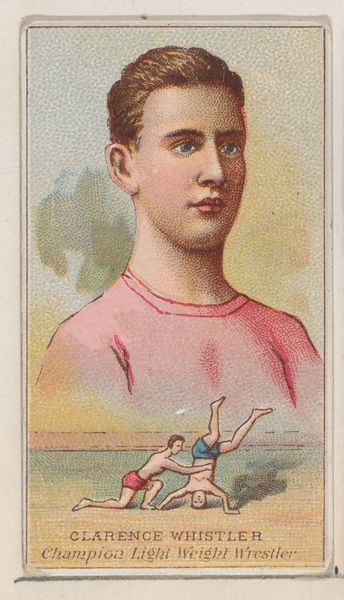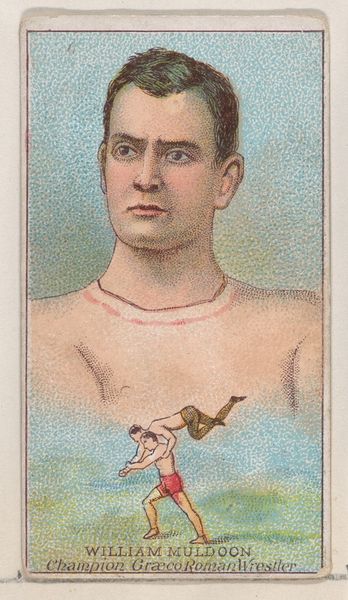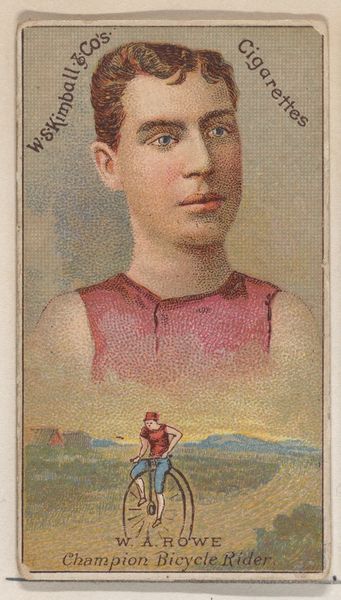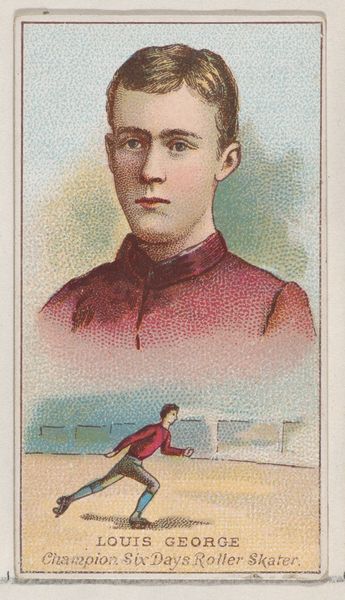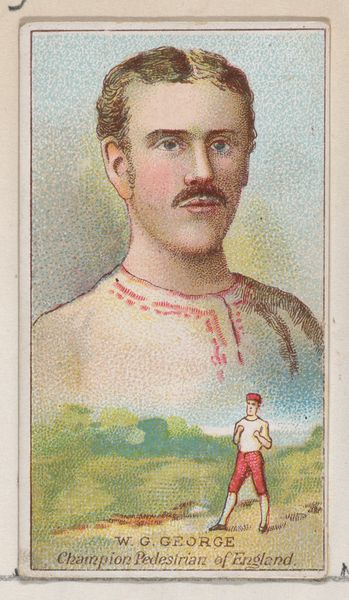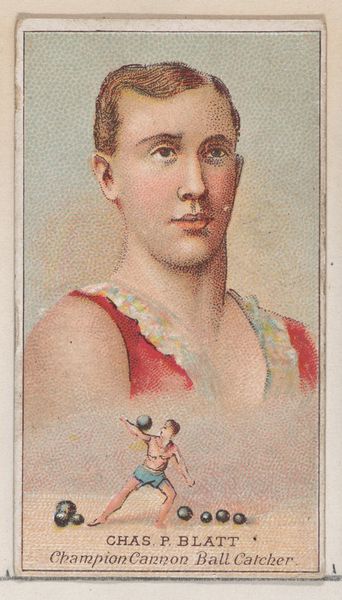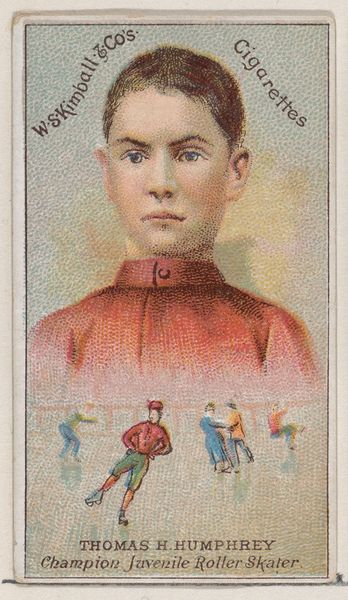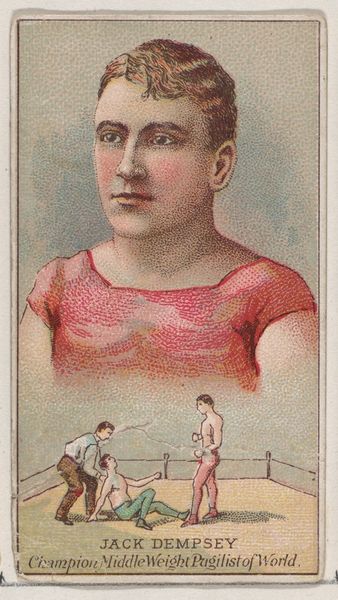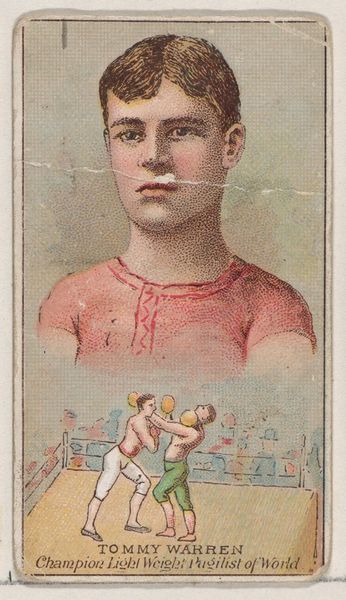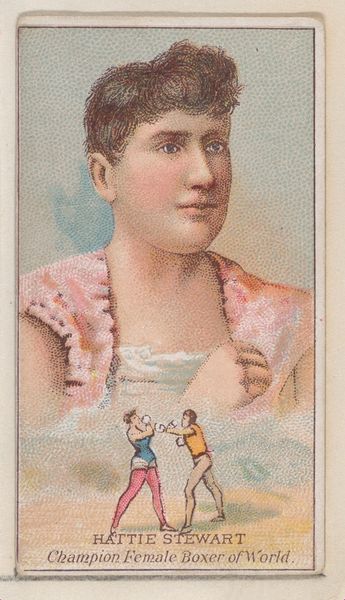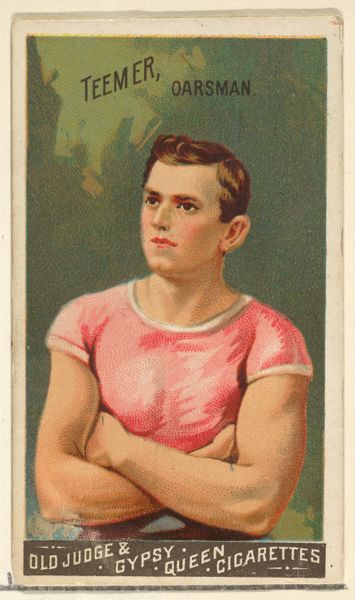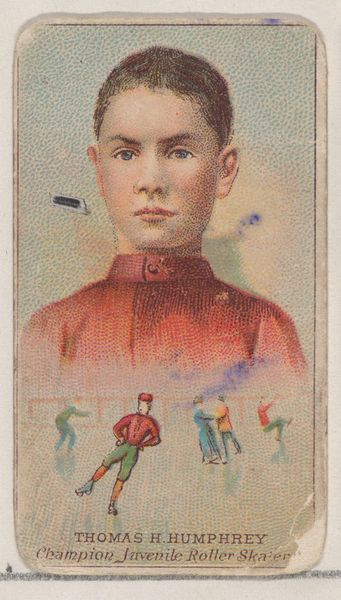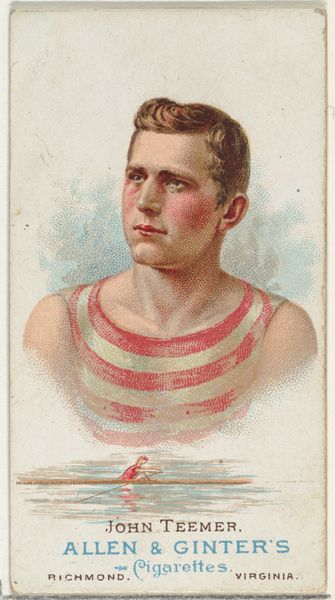
Arthur Wallace, Champion Swimmer of California, from the Champions of Games and Sports series (N184, Type 2) issued by W.S. Kimball & Co. 1887
0:00
0:00
drawing, coloured-pencil, print
#
portrait
#
drawing
#
coloured-pencil
# print
#
portrait reference
#
coloured pencil
#
genre-painting
#
history-painting
Dimensions: Sheet: 2 11/16 × 1 1/2 in. (6.8 × 3.8 cm)
Copyright: Public Domain
Editor: So this is "Arthur Wallace, Champion Swimmer of California," made around 1887 by W.S. Kimball & Co. It seems to be a colored pencil drawing reproduced as a print. The portrait style is striking. What can you tell me about this piece? Curator: Well, consider the context: W.S. Kimball & Co. primarily manufactured cigarettes. These cards, including the one of Arthur Wallace, were trade cards, essentially advertisements packaged with their products. What does it suggest to you that mass-produced images were used as marketing tools connected to smoking? Editor: It points to a democratization of imagery, maybe? Taking art outside of the galleries and putting it directly into the hands of the public, as part of their everyday consumption. It also feels… exploitative? Like they're using art to sell an addictive product. Curator: Precisely. This image-as-commodity underscores how artistic representations become entangled with market forces. The choice of Arthur Wallace is telling too. What kind of ideals did Kimball Co. attempt to associate with their brand, and how do popular notions of "champions" figure into those choices? Editor: Champion swimmers signify health and strength. By associating their product with these figures, they’re trying to project those qualities onto their cigarettes, which is… ironic, given the health consequences of smoking. But beyond the individual depicted, is the material process of making the artwork – drawing, then print, then distributed to sell cigarettes - just as relevant? Curator: Absolutely. The labor involved, the methods of reproduction, and the object's journey into consumer culture are all integral to its meaning. Think about who produced the image, and what materials, methods, and meanings were being promoted at the turn of the century, then circulated globally with devastating impacts on human health. Editor: So it’s not just a portrait; it's a window into the marketing and social values of the late 19th century. Curator: Exactly. Seeing it that way makes us consider the larger economic and social structures shaping even the simplest of images. It has me thinking about where my own values show up in the objects I study.
Comments
No comments
Be the first to comment and join the conversation on the ultimate creative platform.
